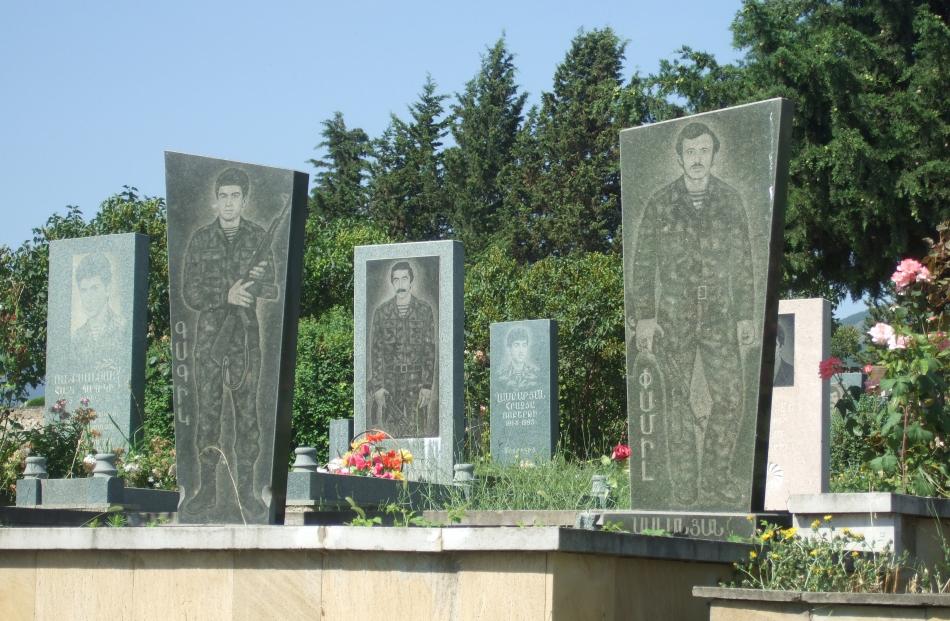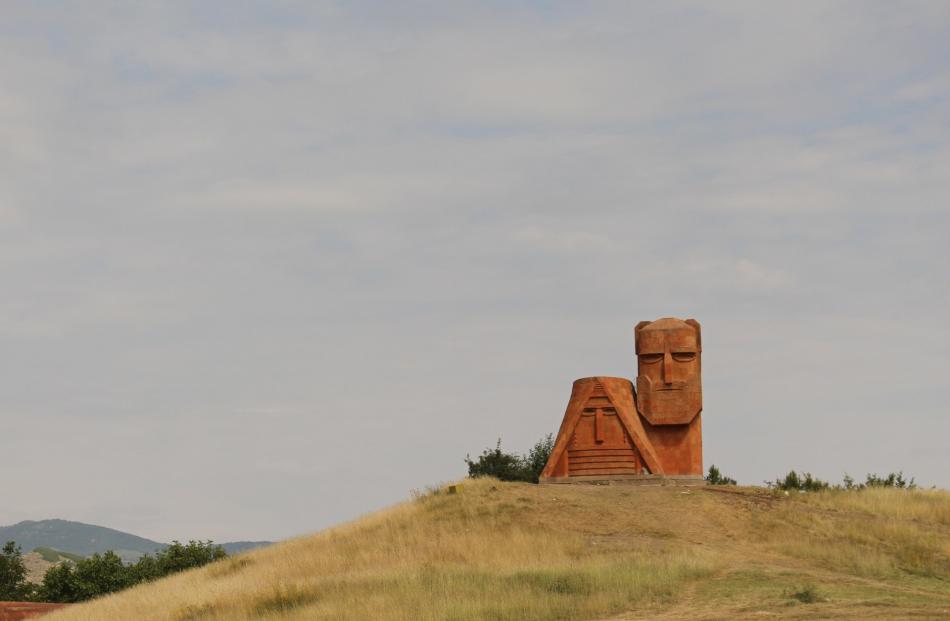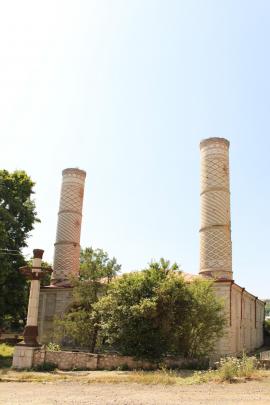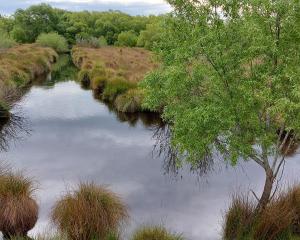David Josland travels to the little-known territory of Nagorno-Karabakh near Iran where periodic conflict still arises.
We have travelled to Nagorno-Karabakh twice, both times after conflict has claimed casualties on both sides.
Karabakh is a landlocked and mountainous region in the South Caucasus between Azerbaijan to the north and east, Iran to the south and Armenia to the west.
Early last year conflict arose between Armenia and Azerbaijan in the disputed territory.
The last time we travelled there, it was relatively peaceful, but the scars of vicious fighting in a messy war of independence, from 1989 to 1994, could still be seen.
We entered Karabakh along the winding road from the Armenian town of Goris, which leads to the southern border crossing at the foot of a deep ravine.
Stepanakert, the capital, was named after Stepan Shahumyan, who was an important Bolshevik leader nicknamed the ``Caucasian Lenin''.
As the leader of the Baku Commune, he defended the Azerbaijani capital against advancing Muslim and Turkish troops but when the Bolsheviks lost power in Baku in 1918, he and 25 other commissars were captured and executed.
A large stone statute of Shahumyan dominates a park in central Stepanakert.
The city is modern with many large buildings, but none bigger than the parliament building and the Presidential Palace, from where President Bako Sahakyan runs the territory.
The territory was allocated by the Bolshevik government in 1921 to what was then the Soviet Republic of Azerbaijan.
Subsequent to the conflict that began in 1989, Karabakh has been, in the words of the human rights lawyer and international jurist Geoffrey Robertson QC, ``claimed by Azerbaijan (supported by Turkey) but its independence (unrecognised by other countries) has been protected by Armenia''.
So what had led to the bloody battles that occurred between 1989 and 1994? Tensions flared inside Karabakh just as the Soviet Union was about to break up. To put it simply, the Armenian population of Karabakh favoured unification with Armenia but Azeri settlers had been increasing in number and this worried the local Armenian population.
Skirmishes broke out with both sides employing a large number of mercenaries.
Armenian troops supported the local Armenian Karabakhtis, while Afghan mujahideen, Chechen fighters and Turkish soldiers participated on Azerbaijan's side.
The Russian military, to varying degrees, supported both sides.
The fighting would cost 30,000 people their lives and create more than one million refugees, perhaps two-thirds of them Azeris.
It also resulted in the ethnic cleansing of the entire Muslim Azeri population from Karabakh and Armenia. Correspondingly, ethnic cleansing and massacres of Armenians took place in Azerbaijan.
As is the case in these situations, it is the civilians that bear the brunt.
The smile of the young woman working in our guest house belies her personal tragedy.
We learn that her brother died in the conflict and shortly after his death, her father was shot dead by an Azeri soldier while tending animals on the family property.
After these events, the woman, we are told, took up arms herself to defend Karabakh.
The locals refer to Karabakh as Artsakh. The small Artsakh State Museum has many artefacts and several rooms dedicated to the territory's heroes from the conflict in the 1990s.
The tombstones in the nearby National War Cemetery, facing towards the rising sun, show life-sized images of soldiers in military fatigues with Kalashnikovs and home-made armaments.
Men and women lie side by side and their images, cast on their black granite tombstones, seem ghost-like.
Leaving Stepanakert for the archaeological ruin of Tigranakert, the road passes through the middle of the fortress of Askeran, which was built by Panah Khan to protect the fertile valley that is the access point to central Karabakh and the Agdam Plain.
The towers and walls of the fortress are largely intact.
As we are about to drive across the plain, our vehicle is stopped by soldiers at a roadblock. While travelling, we have passed several large trucks carrying tanks.
Our driver informs us that the Karabakhti army is conducting military manoeuvres nearby and that it will not be possible to continue today.
We stop instead at one of the many monuments to the earlier war, a tank pointing its gun towards Azerbaijan.
High in the mountains is the town of Vank, redeveloped under the patronage of the wealthy Russian-based businessman Levon Hairapetyan.
Hairapetyan has created an eclectic fun-park that includes a hotel built in the form of the Titanic. This contains Karabakh's only Chinese restaurant.
Surrealist sculptures decorate the side of the valley close to where a pirate ship has been constructed and, nearby, a Russian GAZ-Volga car sits atop a large plinth.
Perhaps most extraordinary of all, the face of a lion has been carved into a nearby cliff-face. Its roar, generated by a sound system, reverberates through the valley.
It is still not possible to escape the war, though. Nearby, on both sides of the road, are fences covered in thousands of number-plates taken from captured Azeri vehicles.
Vank is the gateway to the famous hilltop Gandzasar Monastery.
The monastery, which was built between 1216 and 1238, includes the 13th-century church of Surb Hovhannes Mkrtich (St John the Baptist). It sits high above the town, commanding spectacular views of the forested mountains and the valley below.
To reach Tigranakert, you have to travel along the periphery of the Agdam Plain and past the bombed-out city of Agdam.
Before the war, the city had a population of around 50,000 people and had been a rich farming centre with apartments, cafes and restaurants, and large homes.
Azeri forces occupied the city and from it launched rocket attacks into Stepanakert.
When the Karabakhtis gained the advantage, the city was systematically bombed to the point of absolute destruction.
Agdam now has a handful of residents and is off-limits to tourists due to its proximity to the Azeri border.
The remains of tanks and troop-carriers are strewn across the plain.
The abandoned and ruined buildings of Agdam can be seen in the distance.
Stark Soviet-era apartment buildings sit as skeletal monuments and a bleak reminder of a time in the past that was once peaceful. The tall minarets of the city's mosque indicate the presence of the previous inhabitants.
Tigranakert is an ancient archaeological site and is of vital importance to the Armenian people of Karabakh.
For them, it proves that the land belongs to the Armenians. It has been used to justify their claim of independence.
Tigranakert is thought to have been a city that was founded by the Armenian King Tigran the Great or by his father, Tigranes I.
The site is located on a hillside and a small area of excavated ruins is easily accessible near the 18th-century Azeri Shah Bulart Fortress which now houses a museum of artefacts found in the area.
The scars of the 1989-1994 conflict are never far from any place that you visit in Karabakh.
The town of Shushi sits above Stepanakert on a rocky bluff. During the fighting, it was an Azeri stronghold that included a citadel built in 1750 by Panah Ali Khan Javanshir. This made the Karabakhtis in Stepanakert, both civilian and military, very vulnerable.
Azeri forces in Shushi, commanded by Rahim Gaziev, had unleashed artillery shells and long-range rockets on to Stepanakert and its residents.
The most heroic event of the conflict took place when Shushi fell to a spectacular night-time assault, Karabakhti soldiers scaled the cliffs to the rear of the town on May 8 and 9, 1992, and overwhelmed the Azeris.
Today, the walls of the citadel have been restored, as has much of the town.
The Muslim Quarter remains in a dilapidated state. Several ruined mosques have been left standing, including the large Yukhari Govhar Agha Mosque dating from 1883.
To solidify their presence in Shushi, the Karabakhtis have restored the Ghazanchetsots Cathedral that dates from 1887. It is in pristine condition.
As we leave Karabakh by road, above us, in a valley, chains can be seen suspended in a lattice-like formation across the gorge.
These were erected by Karabakhti soldiers to prevent Azeri helicopter gunships from flying through the valley to strafe its inhabitants with gun and rocket fire.
It is possible that these make-shift defences will again serve their purpose if fighting between Armenia and Azerbaijan in the disputed territory of Karabakh recurs.
David Josland is an Auckland writer.


















